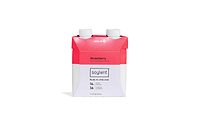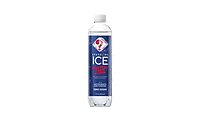Performance beverage-makers tailor offerings to everyday consumers
Category sees more hybrid, cross-functional beverages

Between working, exercising, cooking healthy meals and maintaining a social life, consumers have a lot on their plates when it comes to living a healthy and balanced life. As a result, many are turning to sports and performance beverages to help them keep up with the demand of their everyday lives.
To fulfill this need state, beverage-makers are developing new products in the name of sports and performance. For instance, 269 new sports and performance beverages were launched in 2018, states New York-based Nielsen in a December 2018 Insights titled “Tops of 2018: Non-Alcoholic Beverage Innovation.” According to a Nielsen Innovation Measurement Profiler survey, 1,163 of respondents said they were trying new beverages as a way to more actively manage their health and wellness.
The performance beverage category is helping consumers manage their health and consume cleaner products. “Similar to other [consumer packaged goods] CPG categories, the performance beverage category has been impacted consumers’ increased preference for transparency,” says Max Maxwell, manager of market intelligence at Glanbia Nutritionals LLC, Chicago.
“This demand for transparency has taken various forms, with some consumers preferring a reduced number of ingredients on the label while others want to know where each ingredient comes from or how it’s made,” he continues.
Greg Robertson, head of natural performance ingredients at Döehler North America, Cartersville, Ga., also highlights how transparency is impacting the performance beverage category. “Part of the wellness trend includes the use of more authentic and ‘real’ ingredients versus the synthetic and/or overly processed compounds often found in traditional energy and performance beverages today,” he explains. “This [can] include the use of botanical extracts that contain ‘naturally occurring caffeine’ and other naturally occurring compounds.
“On-the-go lifestyles contribute to beverages being consumed by anyone seeking an energy boost or some type of pick-me-up,” Robertson continues. “Not only is the target audience going beyond the typical workout crowd, the segment is branching out beyond just performance to include the development of products for overall wellness.”
Glanbia’s Maxwell also notes how the performance beverage category has begun to tailor to the common consumer — and not just athletes. “Just as the name indicates, performance beverages improve performance,” he says. “For the world-class athlete that may be the 1- to2-percent difference in winning or even to their team coming away with a victory. To the everyday athlete, performance beverages might enable someone to not only perform better, but feel better while exercising or playing their sport.
“Even further, the category has recently seen expansion into the lifestyle health-and-wellness category, playing to consumers’ predilection to support not only their bodies but their minds as well,” Maxwell continues. “For the large number of consumers who only workout or exercise occasionally, appealing to their mental and cognitive health is an important entry point for manufacturers in the performance beverage category.”
Marianne McDonagh, vice president of sales for Minneapolis-based Bioenergy Life Science Inc. (BLS), details the ways that performance beverages now incorporate a greater variety of functions. “Performance beverages are functional beverages designed to deliver a specific ingredient or ingredients for an intended purpose such as rehydration, nutrient replenishment and/or energy,” she says. “[They] now include ingredients that support cognition, immune health, healthy aging and stress reduction.”
A cornucopia of functions
Consumers continue to pay closer attention to the ingredients in their beverages and how these ingredients impact their well-being, Döehler’s Robertson says. This is driving brands to adapt, clean up or create products that incorporate known and purposeful ingredients, causing consumers to be more open to exploring plant-based ingredients. For example, ingredients that have been linked to traditional Chinese or Ayurverdic medicine, he explains.
This new wave of performance-beverage consumers has fragmented the market, and there now is a wide variety of options to target every demographic, Robertson adds.
“Now we are seeing the next level of these types of ingredients,” he says. “[For example], brewed like tea, guayusa offers clean, focused energy by providing as much caffeine as coffee but with twice the antioxidants of green tea. Cascara provides powerful antioxidants and amino acids and is known to fight fatigue and increase ingredient levels. Progressive energy seekers are turning to plant-based options like CBD, mushrooms, nootropics and adaptogens for overall balance and increased energy without added caffeine.”
Beverages that are high in protein also are fulfilling a demand in performance beverages. “High protein was cited as the No. 1 desired health benefit in a 2019 survey conducted by Mintel,” Glanbia’s Maxwell says. “Fifty-two percent of the respondents desired high protein in their performance beverages.”
To help meet consumers’ protein needs, Glanbia offers OptiSol 1007, a heat stabilizing whey protein concentrate for cleaner-label neutral pH beverages, Maxwell says. OptiSol 1007 acts as a stabilizer when used on its own or in combination with milk proteins and/or caseins and has been shown to decrease age-related gelatin while decreasing sedimentation levels, he adds.
Along with the functional attributes of performance ingredients, beverage-makers also should consider the effectiveness of these ingredients in their formulas before bringing a product to market, BLS’ McDonagh notes. “If the beverage is not formulated properly using science-based functional ingredients, the other factors will not matter because it ultimately will not sell,” she says.
For example, carbohydrates have been used in performance beverages for many years to assist with recovery, McDonagh says. Beverage-makers now are using BLS’ science-backed ingredient Bioenergy Ribose because it naturally drives the cellular energy (ATP) process while increasing exercise tolerance, muscle mass and endurance, and helping the metabolism run efficiently, she explains.
“Because Bioenergy Ribose delivers sustained physical energy, it is associated with enhanced physical and athletic performance from the beginning of training to the end of competition,” McDonagh adds.
When turning to performance beverages, consumers want to be sure that the products they are consuming will offer sustained energy and performance, avoiding a potential “crash,” experts note. “Ingredients like HI-MAIZE 260 resistant starch, VERSAFIBE 1490 resistant starch and SUSTRA 2434 slowly digestible carbohydrate have been shown to promote healthy blood sugar, which could aid in performance by preventing rapid rises and crashes in blood sugar concentration,” says Diana Munoz, associate manager of marketing and business development, protein isolates and concentrates at Westchester, Ill.-based Ingredion.
For instance, SUSTRA 2434 is a slowly digestible carbohydrate that is easy-to-formulate and can enable claims such as “low glycemic index” and “sustained blood glucose,” the company said in a statement at the time of the ingredient’s release. The ingredient features a clean-taste profile, sensory acceptance and appealing consistency where manufacturers can develop convenient, consumer-desired energy products, the company said.
The next generation
As consumers continue to seek out healthier alternatives, the performance beverage category will continue to adapt, experts say.
“The trend for healthier options in the performance category will continue,” Döehler’s Robertson says. “Expect to see continued movement into plant-based extracts being used to provide naturally occurring caffeine, followed by the increased use of adaptogens for overall balance, achieving energy without added caffeine.
“As the boundaries continue to blur across all beverage categories, more traditional performance beverages will include claims to provide additional energy, hydration, vitamins, minerals and other functional performance ingredients,” Robertson continues. “Natural, balanced energy without the jitters, crash or jolted buzz, plus added functionality is the next generation in the performance category.”
Glanbia’s Maxwell also notes the blurring of beverage boundaries in the performance category. “Consumers continue to expect more from their beverages, which has fostered hybridization and cross-category experimentation,” he says. “Enhanced waters and beverages utilizing nootropics and adaptogens will continue to blur the lines in the category, particularly when it comes to what constitutes a nutritional drink versus a performance or weight-loss beverage.”
Several companies are releasing products that are blurring beverage categories. For instance, WTRMLN WTR, a brand of Denver-based World Waters LLC, launched WTRMLN SportWTR, an electrolyte-filled, performance-enhancing line that contains vitamin C and L-citrulline, an amino acid that repairs muscles post-workout, the company says.
Liv Tru, Costa Mesa, Calif., released its self-titled line of natural performance beverages crafted with turmeric. Turmeric is known for its healing benefits including better brain and muscle health, the company says. Liv Tru is formulated with the proprietary antioxidant curcumin complex for faster absorption and recovery, it adds.
Personalization is another trend expected to further elevate performance ingredients, Glanbia’s Maxwell says. “Personalization of performance beverages is a trend that will grow as the technology to analyze the specific needs of individuals becomes more available at a reasonable cost and interest for these types of beverages increases among individuals wanting their drink and food to better nurture their bodies and minds,” he explains.
“Beverages are one of the most convenient ways to ingest ingredients that help you perform better,” Maxwell continues “Whether you prefer the ultra-convenience of a [ready-to-drink] or the personalization and economy of a [ready-to-mix] RTM powder.” BI
Looking for a reprint of this article?
From high-res PDFs to custom plaques, order your copy today!






